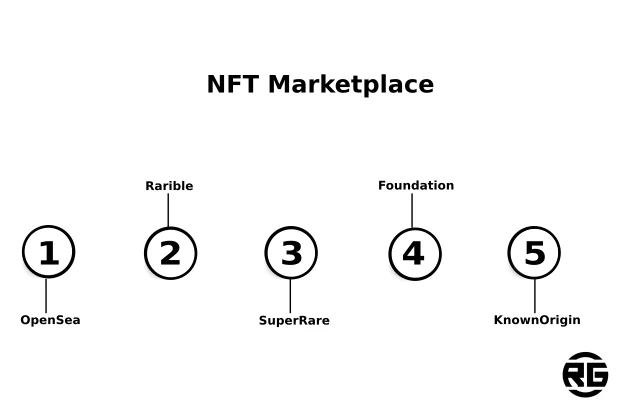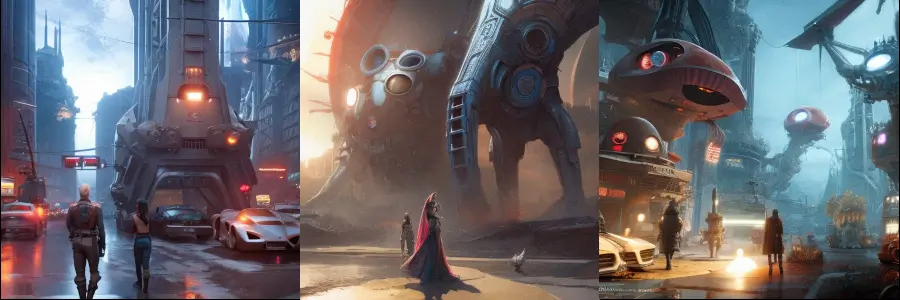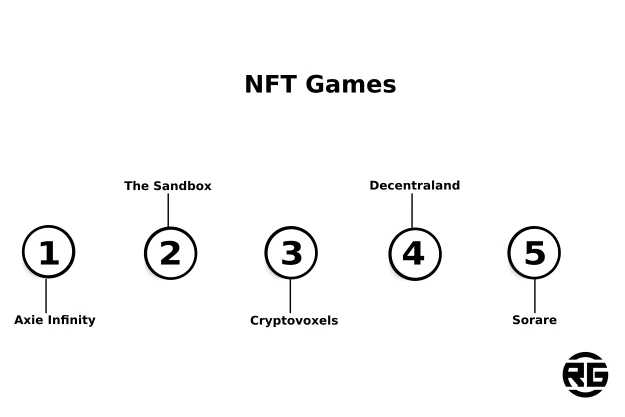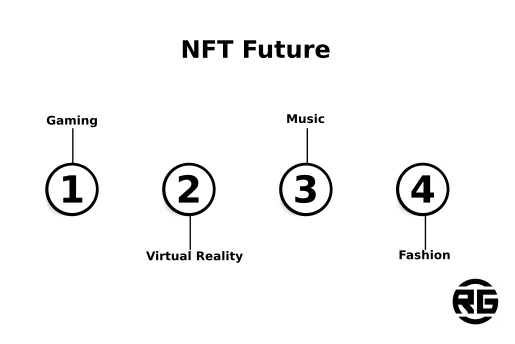NFT Introduction
Non-Fungible Tokens (NFTs) are a type of digital asset (NFT collector tokens). You can own a unique item or piece of content, such as artwork, collectibles, or in-game items.
They are built on blockchain technology, which allows for digital ownership and scarcity to be verified and tracked. NFTs can be bought and sold like physical assets, and their value can fluctuate based on demand.
Where is NFT Currently Used?
The use cases for NFTs are varied. Here are a few examples – virtual real estate, digital collectibles, and even virtual trading cards. Some artists and creators are using NFTs to monetize their digital creations, such as digital art, music, and videos. NFTs are also being used in the gaming industry to represent unique in-game items. I mean by that weapons or armor, that can be traded among players.
One of the key benefits of NFTs is that they allow creators to prove ownership. Not only, becasue owners can authenticity their digital assets. As NFTs are built on blockchain technology, they are tamper-proof and can’t be replicated or duplicated. This ensures that the original creator of the digital asset is the only one who can profit from it.
Another benefit of NFTs is that they allow for true digital scarcity. With traditional digital assets, it’s easy to make copies, which can make it hard for creators to monetize their work. With NFTs, however, each token represents a unique and one-of-a-kind asset, which means that its value can appreciate over time.
The NFT market has been growing rapidly in recent years, with many notable sales taking place. In March 2021, an NFT artwork by the artist Beeple sold for $69 million at a Christie’s auction. It was a new record for the most expensive NFT ever sold. In addition, many other high-profile sales have taken place, including artists like Kings of Leon and Paris Hilton.
Concerns About the NFT
Despite the growing popularity of NFTs, there are also concerns about the environmental impact of the market. Because NFTs are built on blockchain technology, they require a significant amount of energy to create and transfer. This has led to criticism from some environmentalists, who argue that the energy usage associated with NFTs is not sustainable.
Despite these concerns, many experts believe that NFTs have the potential. It may revolutionize the way we think about digital ownership and monetization. As the technology and the market continue to evolve, and sure will envolve.
It’s likely that we will see even more innovative uses for NFTs in the future.
NFT Marketplace
The non-fungible token (NFT) market is a rapidly growing industry. There are now several major marketplaces where users can buy, sell, and trade NFTs. These marketplaces offer a wide range of digital assets, including art, collectibles, and in-game items.
NFT Collector Tokens and OpenSea
One of the biggest NFT marketplaces is OpenSea. OpenSea is an open marketplace for all types of digital assets, including art, collectibles, and in-game items. It is the largest NFT marketplace in terms of the number of assets available for purchase. Find there over 13 million assets listed. OpenSea also offers a wide range of tools for creators. Such as the ability to mint your own NFTs and create your own marketplaces.
Marketplace Rarible
Another major NFT marketplace is Rarible. Rarible is an open marketplace for NFTs, with a focus on digital art and collectibles. It has a wide range of assets available for purchase, with over 2 million listed. Rarible also offers a range of tools for creators. For more I send you to project website.
What About SuperRare?
A third major NFT marketplace is SuperRare. SuperRare is a curated marketplace for digital art. It only accepts a small percentage of submissions, ensuring that only the highest quality digital art is available for purchase. As of 2021, SuperRare has over 24k digital artworks.
Foundation Note
Foundation is another notable marketplace that focuses on digital art. It has a curation process that allows only high-quality digital art to be listed on the platform. In case of tools for creators give you tools similar to OpenSea.
It also offers a range of tools for creators, such as the ability to mint your own NFTs and create your own marketplaces.
KnownOrgin Marketplace
Lastly, KnownOrigin, it is a marketplace for digital art and collectibles. It focuses on providing a platform for emerging artists and creators to showcase their work and connect with collectors. KnownOrigin also offers a wide range of tools for creators. I recommend to check it by yourself.
These NFT marketplaces are just a few examples of the many platforms. Over there you buying, selling, and trading NFTs. Each of these marketplaces has its own unique features and strengths. The best one for you will depend on your specific needs and interests.
While these marketplaces are the most notable. It’s important to note that NFT marketplaces are constantly evolving and new platforms are emerging. It’s worth keeping an eye on developments in the industry. Additionally, as NFTs are digital assets and are stored on the blockchain. Do what’s important ! Research and due diligence before making any purchases. You ensure the security of your assets.

Indeed, more and more places are emerging where you can trade NFTs.
NFT Games
Non-Fungible Tokens (NFTs) are being used in the gaming industry. NFTs represent unique in-game items, such as weapons, armor, and other collectibles. These NFTs can be bought, sold, and traded like physical assets, and their value can fluctuate based on demand.
NTF Collector Tokens In Axie Infinity
One of the most popular NFT games is Axie Infinity. It is a blockchain-based game that allows players to breed, raise, and battle fantasy creatures called Axies. Players can also earn cryptocurrency by participating in the game. These Axies are unique and can be bought and sold on the marketplace. This game is one of the first mainstream games to incorporate NFTs.
The Sandbox
Another popular NFT game is The Sandbox. It is a virtual world where players can build, explore, and monetize their own voxel creations using LAND. A non-fungible token that represents a unique parcel of virtual real estate in the game. Players can purchase LAND on the marketplace. Then build on it, and monetize their creations by allowing others to access and interact with them.
Cryptovoxels
Cryptovoxels is a virtual world where players can buy, build, and explore virtual real estate represented by NFTs. Players can purchase land and build on it, and also create and sell their own unique digital assets.
NFT Collector Tokens in Decentraland
Decentraland is a virtual reality platform that uses NFTs to represent ownership of virtual land. Players can buy, sell, and develop land in the virtual world and create their own virtual experiences.
Sorare Gaming
Another game that uses NFTs is Sorare, a fantasy football game that uses NFTs to represent unique player cards. These cards can be bought, sold, and traded on the marketplace. Their value can fluctuate based on the player’s performance in real-life matches.
These NFT games are just a few examples of the many games that are now incorporating NFTs. These games are not only providing a new way for players to engage with the in-game items, but … They are providing new ways for players to earn money by buying, selling and trading the NFTs.
However, as with any new technology, there are also concerns about the use of NFTs in gaming. One of the main concerns is the environmental impact of the technology. As the creation and transfer of NFTs requires a significant amount of energy. Additionally, there are concerns about the potential for market manipulation and fraud in the NFT gaming market.
Despite these concerns, many experts believe that NFTs have the potential to revolutionize the gaming industry. As the technology and the market continue to evolve. It’s likely that we will see even more innovative uses for NFTs in gaming in the future.
In conclusion, NFTs are a new and exciting way for players to engage with in-game items. For developers to monetize their games. NFTs open up new possibilities for players to own and trade unique digital assets. They allows for the creation of new types of games and in-game experiences. As the technology develops, it will be interesting to see how NFTs will be implemented in the gaming industry.
NFT Art

Non-Fungible Tokens (NFTs) are being used to represent and monetize digital art. NFTs allow for the creation of unique digital assets that can be bought, sold, and traded like physical assets. Their value can fluctuate based on demand.
One of the most popular uses of NFTs in art is the digital art market. Artists can create digital art, mint it as an NFT, and then sell it on the marketplace. This allows artists to prove ownership and authenticity of their digital creations. Artists can monetize their work in a way that wasn’t previously possible. Some notable sales in the digital art market include an NFT artwork. The artist Beeple that sold for $69 million at a Christie’s auction. So far, it’s a new record for the most expensive NFT ever sold.
NFT Collector Tokens and Virtual Real Estate
NFTs are also being used to represent virtual real estate in virtual worlds. In these virtual worlds, players can buy and own virtual land, represented by NFTs. They can then build and create on this land and even monetize it. By allowing others to access and interact with it. This allows for the creation of virtual communities and economies, where digital assets have real-world value.
Another use of NFTs in art is the collectibles market. NFTs are being used to represent unique and one-of-a-kind collectibles. For example as virtual trading cards, which can be bought, sold, and traded on the marketplace. These collectibles can have real-world value, and their value can appreciate over time.
NFTs are also being used in the music industry. Artists to monetize their music by creating unique digital assets that can be bought and sold on the marketplace. This includes things like digital album art, music videos, and even live concert experiences.
NFT Collector Tokens and Environmental Impact
However, despite the growing popularity of NFTs in art, there are also concerns about the environmental impact of the market. Because NFTs are built on blockchain technology, they require a significant amount of energy to create and transfer. This has led to criticism from some environmentalists, who argue that the energy usage associated with NFTs is not sustainable.
Despite these concerns, many experts believe that NFTs have the potential to revolutionize the way we think about digital ownership. Their monetization in art as well. As the technology and the market continue to evolve, and it’s happening. It’s likely that we will see even more innovative uses for NFTs in the future.
In conclusion, NFTs are providing a new way for artists to monetize their digital creations. For collectors to own and trade unique digital assets. The use cases for NFTs in art are varied and include digital art, virtual real estate, collectibles, and even music. As the technology develops, it will be interesting to see how NFTs will continue to shape the art world.

The most popular NFT-related games include Axie Infinity, Sandbox, and Decentraland.
NFT Future
The future of Non-Fungible Tokens (NFTs) is still uncertain. As the technology and the market are still relatively new and rapidly evolving. However, there are a few potential developments that experts believe could shape the future of NFTs.
NFT and Gaming
One of the most likely developments is an increase in the use of NFTs in gaming. As more and more games incorporate NFTs. I can expect to see even more innovative uses for the technology. Such as the ability for players to own and trade unique in-game items. For developers to monetize their games in new ways.
NFT and Virtual Reality
Another potential development is the use of NFTs in virtual reality. As virtual reality technology becomes more advanced. It’s likely that we will see more virtual worlds in the future. Places where players can buy and own virtual real estate represented by NFTs. This could lead to the creation of virtual communities and economies, where digital assets have real-world value.
NFT and Music
Another potential development is the use of NFTs in the music industry. NFTs could allow artists to monetize their music by creating unique digital assets. Then they can be bought and sold on the marketplace. I mean piece of art like digital album art, music videos, and even live concert experiences.
NFT Collector Tokens and Fashion
Another potential development is the use of NFTs in the fashion industry. NFTs could allow fashion designers to monetize their designs by creating unique digital assets. That can be bought and sold on the marketplace, such as virtual fashion shows and virtual clothing.
Despite these potential developments, there are also concerns about the sustainability and scalability of NFTs. The environmental impact of NFTs is a significant concern. As the creation and transfer of NFTs require a significant amount of energy.
Additionally, there are concerns about the potential for market manipulation and fraud in the NFT market.
It is important to note that the future of NFTs is still uncertain. The technology and the market are still evolving. Anyway, it’s worth keeping an eye on developments in the industry.

Without a doubt, nft is not a seasonal trend.

Since the beginning of 2021, interest in NFTs has been growing, reaching a peak at the end of the year. It happens to be related to the end of the bull market. Was it a coincidence?
Summary
NFTs are a trend that won’t go away anytime soon. With the development of Web3 technology, tokenization (NFT collector tokens) will accelerate. More and more companies are recognizing this trend. Hence the growing interest in blockchain, NFT and Web3 technology specialists. One of the Web3 concepts is the token economy.

Leave a Reply
You must be logged in to post a comment.